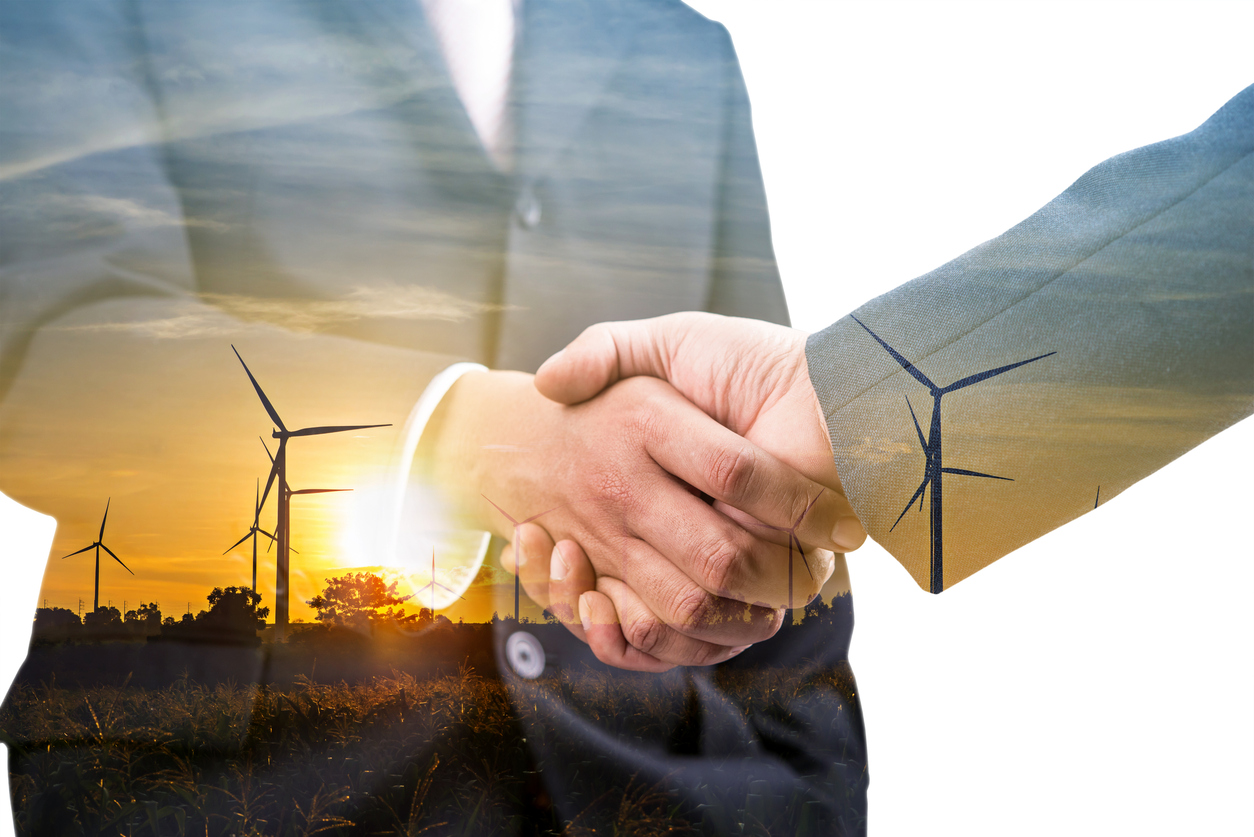Certificates of origin
From 1 January 2020, every energy supplier in the Netherlands is legally obliged to reveal the origin of all electricity supplied, regardless of whether it comes from renewable or non-renewable sources. Previously, only the origin of green electricity was verified with a Guarantee of Origin (GoO). With the introduction of the Certificate of Origin (CoO), electricity generated from fuels such as natural gas, nuclear and coal must now also be accounted for.
With this legal regulation, the government wants to guarantee full transparency on the origin of all electricity in the Netherlands, which is important for companies that value sustainability and responsible energy consumption.

What is the difference between a Guarantee of Origin (GoA) and a Certificate of Origin (CoA)?
A Guarantee of Origin (GvO) applies specifically to electricity from renewable sources, such as wind, solar, hydropower and biomass. This certificate guarantees that the green electricity was actually generated sustainably.
In contrast, a Certificate of Origin (CoO) applies to electricity generated from non-renewable sources, such as natural gas, nuclear and coal. This certificate provides transparency on the use and origin of non-renewable energy, allowing companies to make conscious choices about their energy source.


How does a Certificate of Origin (CoO) work?
Download our infographic on how a CoO works to discover step by step how the certification process works, from generation to the final award of a CoO. For more questions about Certificates of Origin and how we can advise you on them, please refer to our Frequently Asked Questions section at the bottom of this page.
FAQ’s
-
What is a Certificate of Origin (CoO)?
A CoO shows that electricity was generated from fossil sources such as natural gas or nuclear power. EP NL offers CoOs for Dutch gas power plants and nuclear energy to guarantee the origin.
-
Are there any additional costs due to the obligation of CFOs?
Yes, the obligation to use CoO’s to substantiate non-renewable energy may entail additional costs. Energy suppliers have to register with VertiCer and adjust their systems for purchasing, applying (if they own production facilities) and cancelling certificates. In addition, it takes them time to manage, transfer and cancel their CoA portfolio monthly to substantiate their deliveries.
The price of a COO depends on supply and varies between the rate VertiCer charges for the creation of CoOs and the value of the marginal foreign Guarantee of Origin (GoO). It is advisable to consult your supplier for specific rates
-
Why these legislative changes to Certificates of Origin?
Guarantees of Origin (GOs) already provided insight into the origin of renewable energy. However, for electricity generated from fossil fuels such as natural gas, coal or nuclear, this system did not yet exist, leaving the CO2 footprint of this electricity unclear. With the introduction of Certificates of Origin for all electricity deliveries in the Netherlands, both consumers and businesses will have full transparency about the origin of the electricity they purchase.
-
How will this change in law to Certificates of Origin be put into effect?
The Certificate of Origin (CoO) system is similar to the Guarantees of Origin (GvO) system. Any power plant that generates electricity and delivers it to the grid can register with VertiCer. Based on the quantity of energy supplied, the power plant receives Certificates of Origin. These certificates can then be used to substantiate the supply of electricity to end users.
-
What is VertiCer?
VertiCer is a subsidiary of N.V. Nederlandse Gasunie and TenneT TSO B.V. and has been tasked by the Minister of Economic Affairs to issue Guarantees of Origin (GoOs) and Certificates of Origin (CoOs). VertiCer acts as the central point for certification and ensures that the certification system provides insight into the origin and technology of renewable energy.
-
What is the difference between an IMP and a CoA?
GVOs represent green power (sustainably generated), while CoOs refer to grey power (fossil energy sources).
-
What is the difference between CRSs and CoOs?
CSRs represent green power (sustainably generated), while CoOs refer to gray power (fossil energy sources).
-
Distribution of wind energy between the Netherlands and the EU
EP NL supplies a mix of Dutch (0.68%) and European wind power (8.30%), which collectively constitutes 8.98% of the power supplied.
-
What if demand exceeds production? From which countries can CoOs then be bought?
Both GoOs and CoOs can be imported or exported, provided the country concerned is a member of the European Union (EU) or a signatory to the European Economic Area (EEA) Treaty. In addition, the country must be a member of the Association of Issuing Bodies (AIB), which oversees the standardised system: the European Energy Certificate System (EECS).
-
What does full disclosure mean in energy supply?
EP NL applies ‘full disclosure’, which means that the origin of both green and grey power is fully transparent. This makes energy supply more transparent for end-users.
Want to know more about us?
Contact us via our contact page or find out more about our company on the about us page.

